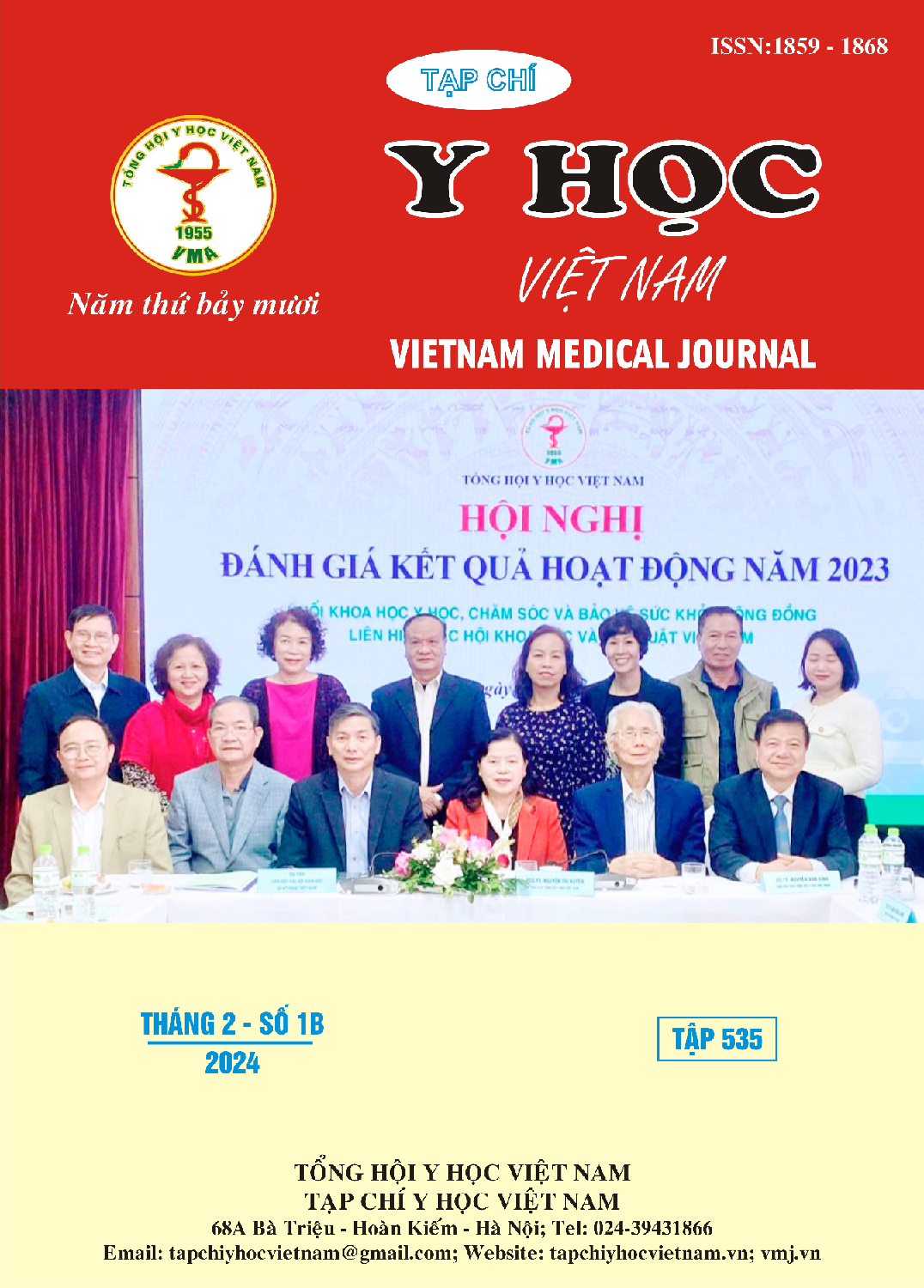THE STATUS OF ANXIETY, STRESS AND SOME RELATED FACTORS AMONG MEDICAL STUDENTS DIRECTLY PARTICIPATE IN FIGHTING COVID 19 IN LOCALITY
Main Article Content
Abstract
Objective: The study was conducted to evaluate the level of anxiety, stress and some related factors of students of Hanoi Medical University directly participating in fighting the COVID 19 epidemic in key provinces and cities in 2021. Research method: Cross-sectional study on 465 undergraduate students of Hanoi Medical University. Research results: Female students participating in the study accounted for 62.1% of the total student population. Students participating in the fight against COVID-19 more than 2 times account for 45.1%. Students participating in the fighting against the COVID-19 pandemic are mainly in Hanoi and Binh Duong (accounting for nearly 50%). The Medical doctor student account for the highest proportion with more than 51%, the lowest rate is the Dentist doctor student, which accounts for the lowest proportion with only 1.2%. The rate of alcohol use decreased from 41.6% before the COVID 19 pandemic to 29% during the pandemic. Overall, for all subjects, anxiety and stress were 7.6% and 43.3%, respectively. Among them, the level of very severe stress accounts for a relatively high proportion of 40 students (8.3%). The number of students with mild and moderate anxiety is only 27 students, with symptoms of severe to very severe anxiety, accounting for more than 2%. Nursing students are 2.2 times more likely to have anxiety than Medical doctor students. Students participating in fighting pandemic activities for about 30-40 days are less likely to have anxiety than students participating in shortterm (less than 15 days) and longterm (over 60 days) fighting pandemic activities. Vaccination support jobs increased the risk of anxiety approximately twice as much as other job groups (in both univariate and multivariate models). Conclusions: The rate of students participating in the COVID-19 pandemic having anxiety and stress are relatively high.
Article Details
Keywords
Anxiety, Stress, students, Hanoi Medical University, COVID-19
References
2. Organization WH. COVID-19 in Viet Nam Situation Report 106. https://www.who.int/ vietnam/internal-publications-detail/covid-19-in-viet-nam-situation-report-106
3. Yang B, Huang AT, Garcia-Carreras B, et al. Effect of specific non-pharmaceutical intervention policies on SARS-CoV-2 transmission in the counties of the United States. Nat Commun. Jun 11 2021;12(1):3560. doi:10.1038/s41467-021-23865-8
4. Bùi Văn Lợi, Nguyễn Kim Anh, Nguyễn Doãn Phương, Nguyễn Hoàng Yến, Trần, Thị Thu Hà, Nguyễn Văn Tuấn. Thực trạng căng thẳng và chất lượng giấc ngủ của lực lượng tuyến đầu tham gia chôngs dịch COVID 19 tại Thành phố Hồ Chí Minh. Tạp chí Y học Việt Nam. 08/07 2023;528(2)doi:10.51298/vmj.v528i2.6147
5. Nguyen DT, Ngo TM, Nguyen HLT, et al. The prevalence of self-reported anxiety, depression, and associated factors among Hanoi Medical University's students during the first wave of COVID-19 pandemic. PLOS ONE. 2022;17(8): e0269740. doi:10.1371/journal.pone.0269740
6. Báo Sức khoẻ đời sống. Sáng 15/10: Nhiều nơi đã ghi nhận các biến thể mới của Omicron, tiếp tục đẩy nhanh tiêm vaccine COVID-19. . Updated 15-10-2022. https://suckhoedoisong.vn/sang-15-10-nhieu-noi-da-ghi-nhan-cac-bien-the-moi-cua-omicron-tiep-tuc-day-nhanh-tiem-vaccine-covid-19-169221015081508254.htm
7. Đặng Thị Hương, Đỗ Nam Khánh, Hoàng Thị Hải Vân, Lê Minh Giang. Tỷ lệ mắc/nghi mắc Covid-19 ở cán bộ y tế tham gia phòng chống dịch tại một số tỉnh/thành và trường đại học của Việt Nam năm 2021 - 2022 và một số yếu tố liên quan. Tạp chí Nghiên cứu Y học. 04/27 2023; 165 (4): 197-207. doi: 10.52852/ tcncyh. v165i4. 1528
8. Quek TT, Tam WW, Tran BX, et al. The Global Prevalence of Anxiety Among Medical Students: A Meta-Analysis. Int J Environ Res Public Health. Jul 31 2019;16(15)doi:10.3390/ijerph16152735


